Hi all–lots of time has passed without a post but those of you who follow me on Facebook and Instagram know I’ve been super busy. While posting some photos on FB this week I realized that many people are easily mystified by all those LBJs of the bird world. LBJ was a president but it’s also the code for LIttle Brown Jobs and you’ll hear birders refer to these a lot, especially in the fall.
Most of you probably have noticed tons of blackbirds all over. These flocks are mixed, full of grackles, starlings, cowbirds and red-winged blackbirds. Look at the two birds on the feeder (I apologize for the blurriness–taken through a window and at a distance). On the right is a female house sparrow. The larger bird on the left is a female red-winged blackbird. You can see that the red-wing is larger and has a different shape than the smaller, stockier sparrow. Their beaks are different and so are the striping patterns.
This little bird was traveling with a pair of song sparrows in my yard this week. It isn’t a song sparrow, though. It is an immature cowbird. It’s a late one so it fooled me–fortunately Sue Finnegan, master birder and banding expert, was able to ID it for me. Many of us have house finches at our feeders but check out this trio. Their markings are much more distinct than the drabber house finches. They have distinctive eye patterns as well. These are immature or female purple finches. I’ve yet to see a male in my yard this fall, but I check often.
Many of us have house finches at our feeders but check out this trio. Their markings are much more distinct than the drabber house finches. They have distinctive eye patterns as well. These are immature or female purple finches. I’ve yet to see a male in my yard this fall, but I check often. 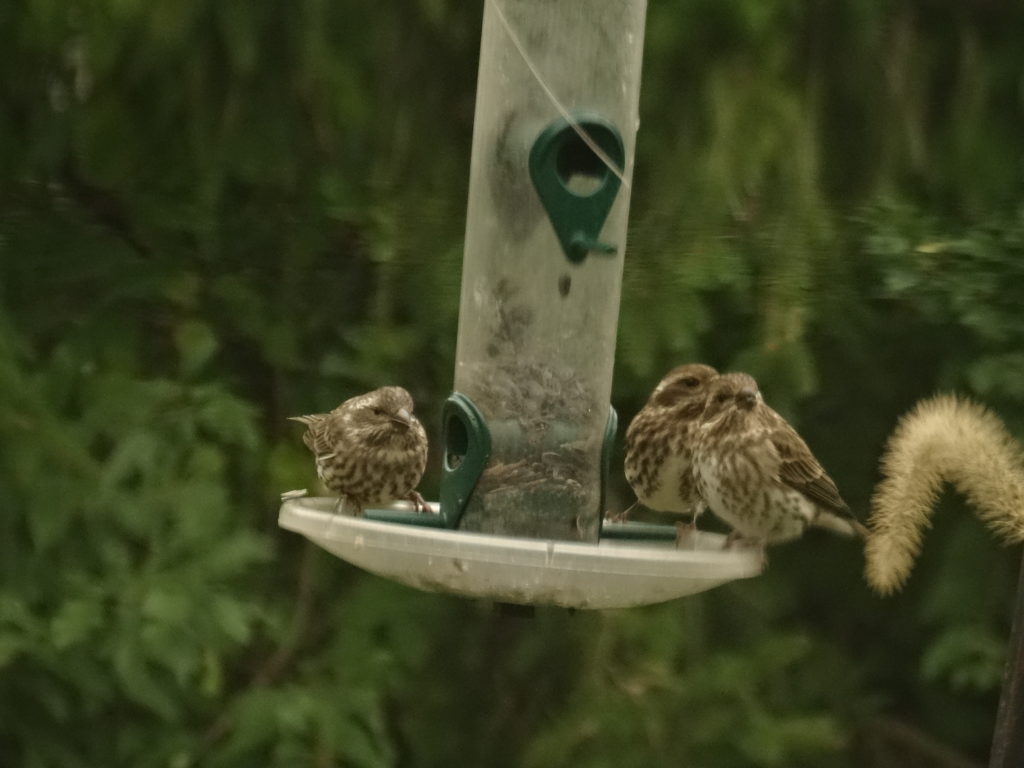 Have you seen these scrappy guys around? These are starlings in their winter plumage. The glossy guy on the bottom left is a grackle.
Have you seen these scrappy guys around? These are starlings in their winter plumage. The glossy guy on the bottom left is a grackle.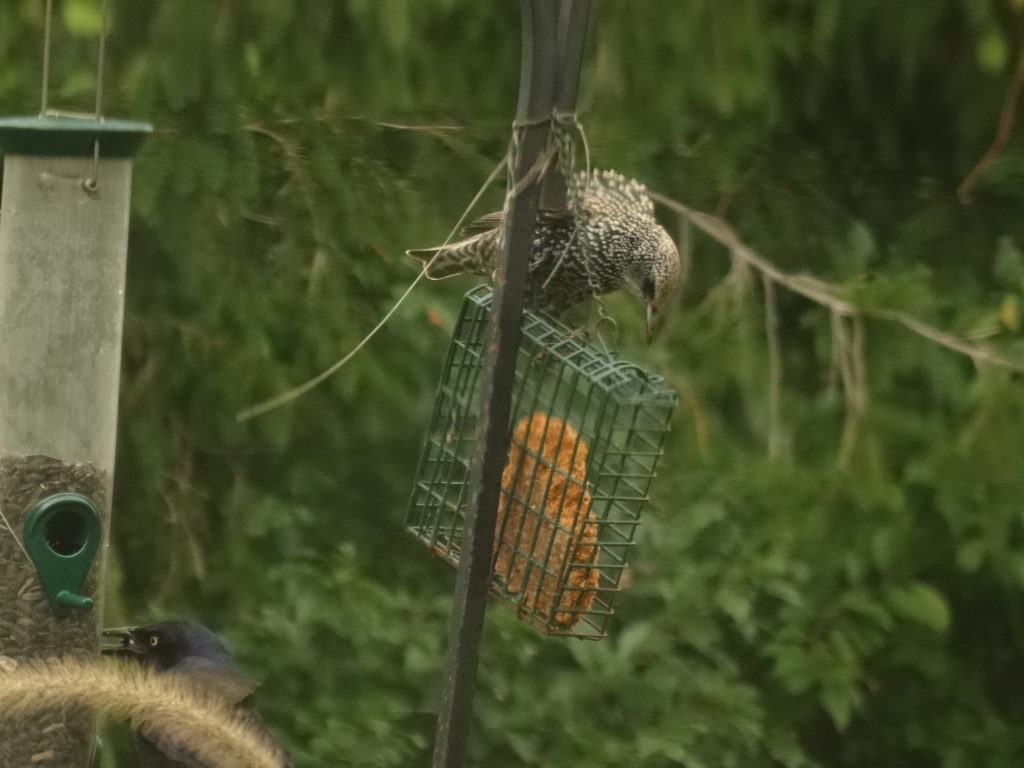 Here’s another shot of a house sparrow(L) and a female red-winged blackbird (R)
Here’s another shot of a house sparrow(L) and a female red-winged blackbird (R)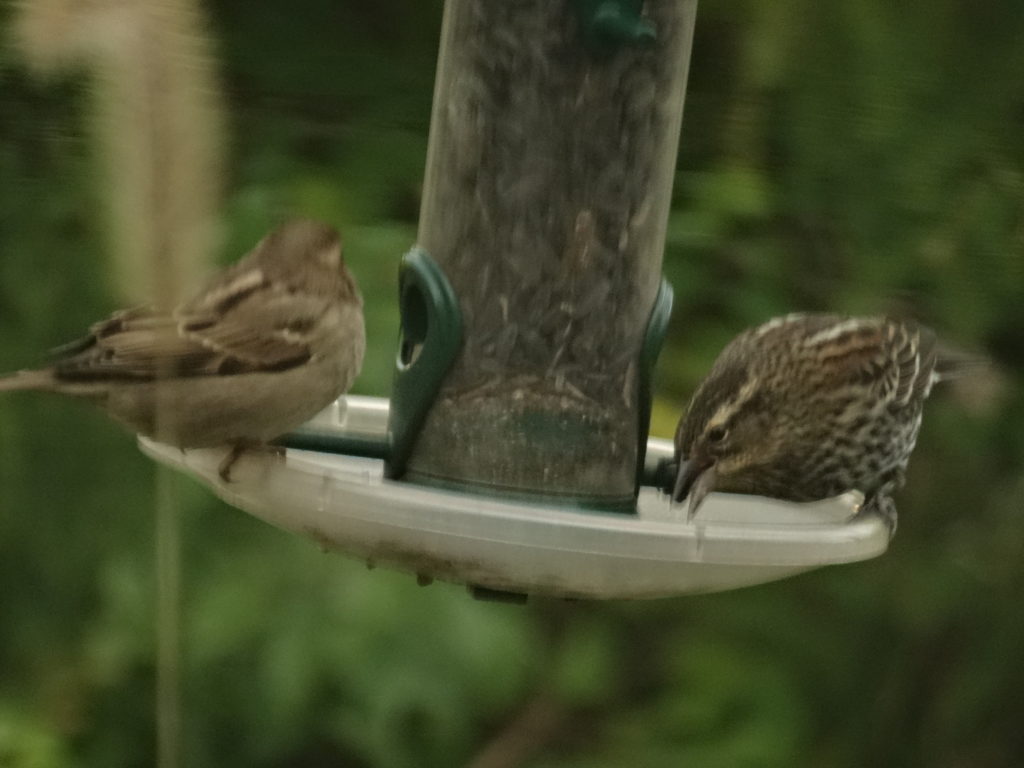 And then there’s this little guy. Hiding in the grasses, feeding on seeds is its favorite thing to do in the fall. This is a song sparrow. Stripey with a noticeable dark spot on its chest, these are small sparrows often found on the ground, rarely at or on feeders.
And then there’s this little guy. Hiding in the grasses, feeding on seeds is its favorite thing to do in the fall. This is a song sparrow. Stripey with a noticeable dark spot on its chest, these are small sparrows often found on the ground, rarely at or on feeders. 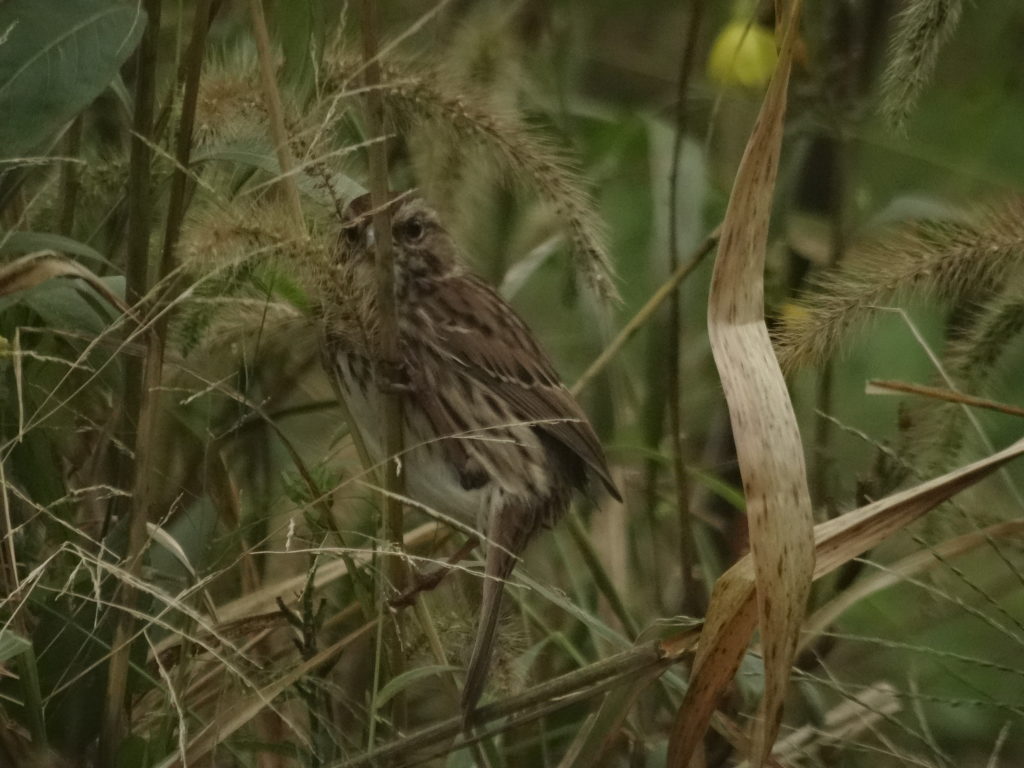 And, these are only a few of the LBJs you might find on the Cape in the fall. Identifying these birds can be challenging and fun. Keep your guidebook handy and study the size, shape, markings and behavior of the birds you are watching to help you identify them. I hope this helps! Each link will take you to a page with much more information.
And, these are only a few of the LBJs you might find on the Cape in the fall. Identifying these birds can be challenging and fun. Keep your guidebook handy and study the size, shape, markings and behavior of the birds you are watching to help you identify them. I hope this helps! Each link will take you to a page with much more information.

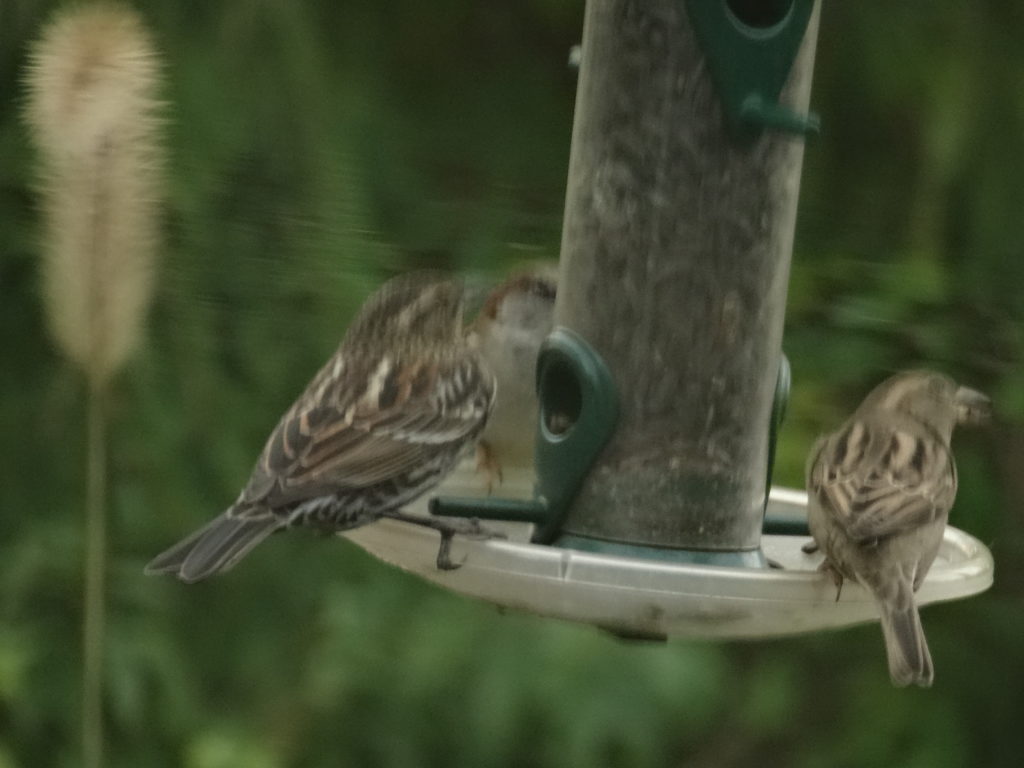
Very helpful lesson. If only my birds would stay still, I could study them (with binoculars) more closely! Will keep trying to learn!